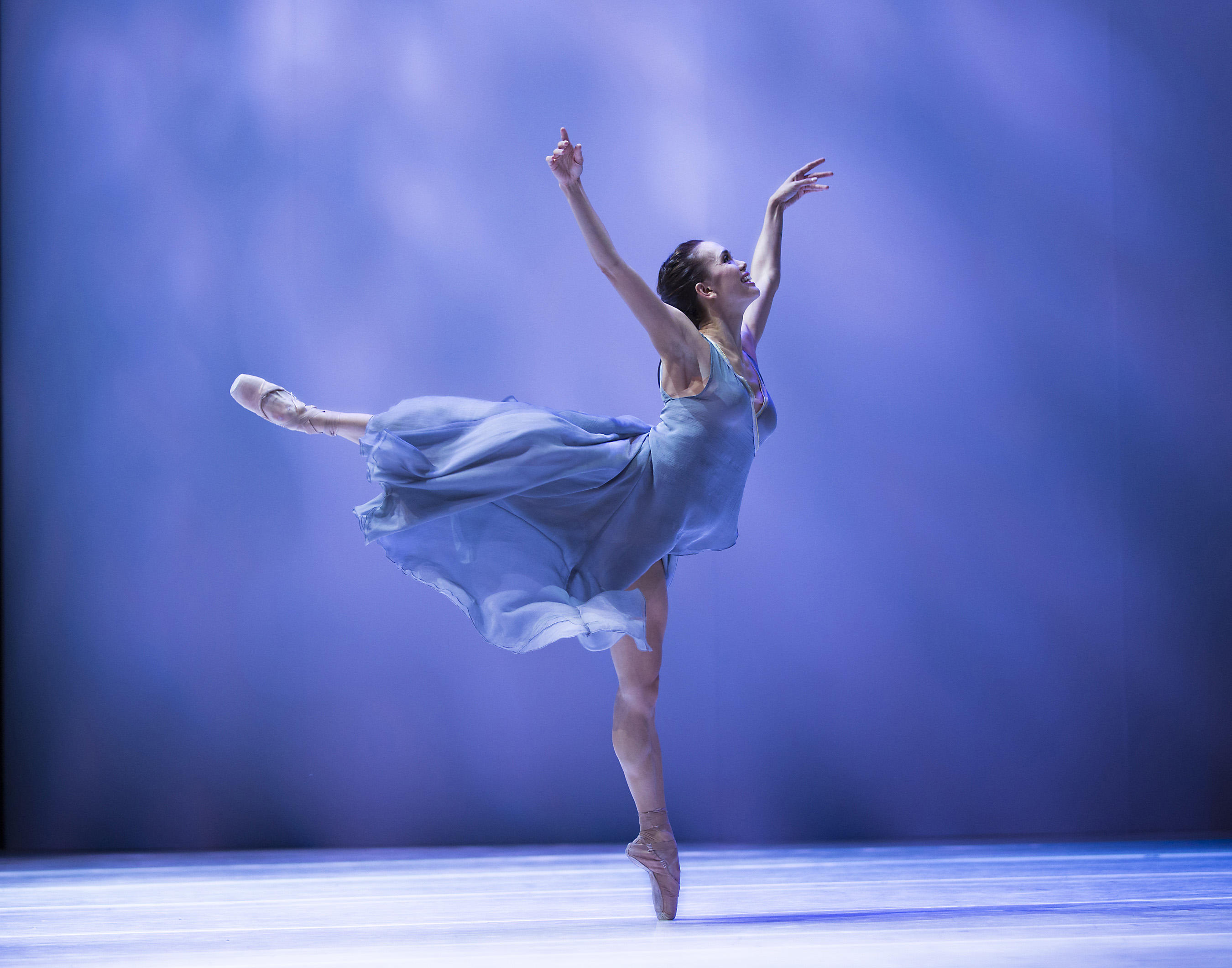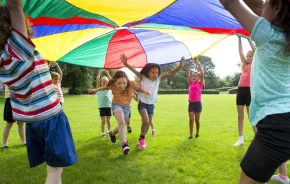
Choreographer Jean-Christophe Maillot must have had teenagers at home when he was writing Roméo et Juliette. From Prokofiev’s angular, abrasive score to the easy athleticism that replaces stiff, traditional ballet, Maillot captures the swells and troughs of the adolescent experience.
It’s in the source material — there’s a reason sophomore English classes teach this particular play, after all — but the language of dance is so much more immediate than Elizabethan English. Boys strut across the stage, reveling in their own physicality. They confuse horseplay and violence, then respond with childish fear when their actions have irrevocable consequences. Juliette is hesitant and sulky at her mother’s party. She doesn’t want to be there, and lets everyone know it — until she sees Roméo. Dancers literally and unironically leap for joy and collapse in despair. The attraction between the two feels magnetic, as if they are resisting a powerful force every time they pull apart.
It would be maudlin if, like the lived experience of adolescence, it wasn’t so intense.
She was a bit young for it, but I took my then 8-year-old daughter to see this ballet the last time Pacific Northwest Ballet performed it. Then we talked about the story (getting married doesn’t guarantee a happy ending) and the historical elements that don’t make sense to a modern child (duels, arranged marriages, keeping bodies in crypts).
This time, since my daughter was already familiar with the story, we prepared by talking about tragedy. In real life, we describe unavoidable events as tragedies — earthquakes and diseases. But in art, tragedy must be the result of human folly, no matter how inevitable it feels.
Roméo et Juliette could be considered a cautionary tale of unbridled passions. But cautionary tales shut people down. A tragedy generates sympathy for its flawed heroes, opening the door to discussion. As we waited for the curtain to rise, my daughter and I brainstormed the better choices that could have changed the ending.
Watching Roméo et Juliette at Pacific Northwest Ballet now as the mother of a tween it almost was a different story. In the opening scene I realized for the first time that Lady Capulet didn’t need a feud to disapprove of Romeo. No parent would want her child associating with his crowd. They may be handsome and rich but they act like a street gang, drinking, starting fights and disrespecting women.
Unlike Lady Capulet, I like my daughter’s friends, so during intermission we talked about how dance is what feelings look like. This is especially true in Roméo et Juliette, where every motion feels so driven by emotion that it’s hard to remember the dancers are probably counting time in their heads and watching the conductor on a monitor.
My daughter doesn’t know it yet, but the balcony pas de deux with its soaring lifts perfectly captures the ecstatic free-fall of first love. At age 11, she already recognizes Juliette’s solo at the ball as the “I met a cute boy” dance. And if the steamy bedchamber scene was a little embarrassing to watch sitting next to my kid, it did create an opening for one of the hardest talks. “If you don’t both feel like that, it’s not the right time for your first time.” Minus the murdered cousin, of course.

We can blame Shakespeare for today’s sitcom stereotypes of ineffectual adults. Juliet’s fussy nurse darts about the stage, all comedic action and no consequence while her mother struts, domineering and self-absorbed. But unlike TV adults, their anguish at Juliette’s death is real. A handy reminder that however unfeeling or inept adults may seem to teens, they really do care.
Friar Laurence in the ballet is more tortured than bumbling, which makes him more identifiable. Many teens can relate to watching people they care about making bad choices and wanting to help. The friar gives evidence that you can’t solve other people’s problems for them.
Both artistically and as a parent, I appreciate the ugliness of Maillot’s violence. Mercutio is killed in slow motion, giving the viewer time to register the shock and absorb the significance of the event. In a change from the play, Roméo strangles Tybalt with a cloth soaked in Mercutio’s blood — again, all in slow motion. Tybalt’s murder is no honor killing. It is a brutal expression of uncontrolled rage that makes everything worse.
Likewise, Maillot’s ending does not glamorize the lovers’ suicide. Roméo and Juliette are not united in death’s embrace — the poison takes effect too soon, and Roméo falls dead just out of reach of his beloved. And there is no silver-lining epilogue announcing the end of the feud. Instead, we are left with Friar Laurence bent in grief over two dead bodies.
The reckless teens have not solved anything with their deaths, only created incalculable suffering for those they left behind. Of course, you can still talk to your teen about how suicide in real life stems less from external events than from mental illness that can be treated.
There is just so much to talk about.
If you go ...
When: Pacific Northwest Ballet is performing Roméo et Juliette, a co-production with Atlanta Ballet, through Feb. 14. Performances are Thursday, Feb. 11, 7:30 p.m.; Friday, Feb. 12, 7:30 p.m.; Saturday, Feb. 13, 7:30 p.m.; Sunday, Feb. 14, 1 p.m. and 6:30 p.m. Arrive early to allow time for parking, pre-ordering intermission snacks, and attending the pre-performance lecture at 6:30 (if your child is willing). Performances run 2 hours and 25 minutes, with one intermission.
Where: Marion Oliver McCaw Hall, 321 Mercer Street, on the north edge of Seattle Center.
Age recommendation: Although Romeo et Juliette is not inappropriate for younger children, it is not really for them either. The passions it conveys are easily recognized by all ages, but harder to understand. With preparation and discussion, tweens can be positively engaged with both the story and dancing, while teens might get more out of the experience than adults. Unlike their parents, Shakespeare and Maillot really get them.
Tickets: Tickets range from $28 to nearly $200. Every family member must have a ticket; buy online. There are no bad seats at McCaw Hall – do not hesitate to buy the cheapest seats available. Tickets can be purchased online. The lowest prices and best availability are Thursday, Feb. 11 at 7:30 p.m. and Sunday Feb. 14 at 6:30 p.m.
Parking: The Mercer Garage is connected to McCaw Hall by a sky bridge. Rates vary, but expect to pay $15-$20. Other pay lots in the neighborhood have similar pricing. Street parking is limited.











